By Alex Trukan
Playing the ball forward is the key requirement to creating chances and scoring. This can happen only if the players in front of the ball are available to receive or the space is created for other players to exploit. One of the key players to make it happen are strikers. They can choose to move and receive the ball themselves but also support others and create pockets. There are a couple of types of movements they can possibly use to help with penetration as a team. This article explores how different types of movements create options to play forward.
One of the main type of movements striker can make is to fill the gaps left by midfielders, both centrally and on the wings. When wide midfielder moves infield, one of the strikers might choose to make a run toward the wide areas. Those types of movements can be called ‘clear and fill’. Midfielder ‘clears’ the space and striker ‘fills’ it.
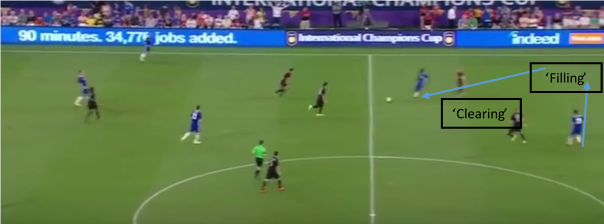
Similarly, in central areas, if the central midfielder clears the space by making a forward run, the nearest striker might drop in to receive. This will create two new opportunities to play forward – direct into a midfielder making a run or into a striker dropping into space.
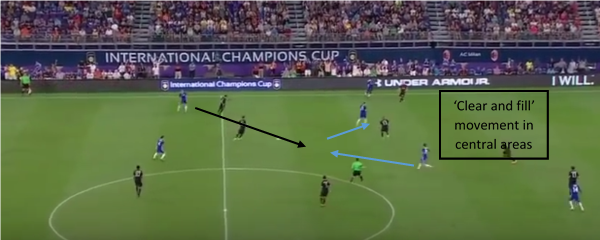
Another type of run can be classed as supporting runs to change the ‘picture’ and create different angle for pass. This can be applied when a central/wide midfielder is under pressure and struggles to find a pass forward. By making a supporting run, different angles are created and the opposition has to change their positions in order to defend it (‘changing the picture’).
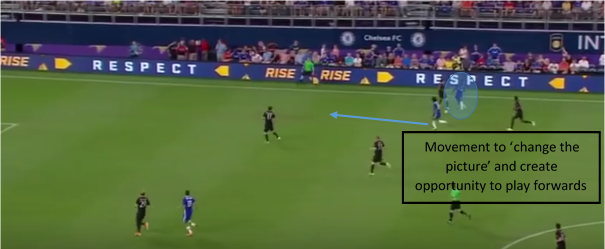
Another type of movement is more directly linked to playing forward. As the striker recognises that there is space in behind and a pass can be played, he might choose to run in behind the opposition’s back line. Using a striker which is further away from the ball (closer one comes short to support) helps to break the defensive line of the opposition.
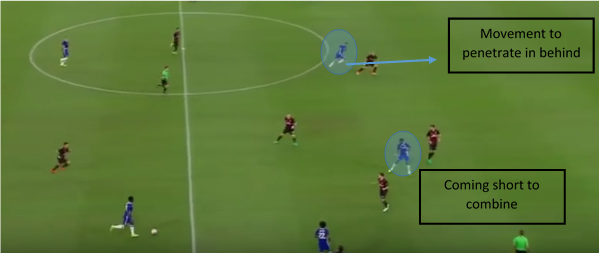
This type of penetrating run will usually move the opposition’s centre backs out of position and create a gap just in front of them. This shows that attacking movements of the striker create both direct (into striker) and indirect (into other players exploiting created spaces) opportunities to play forward.
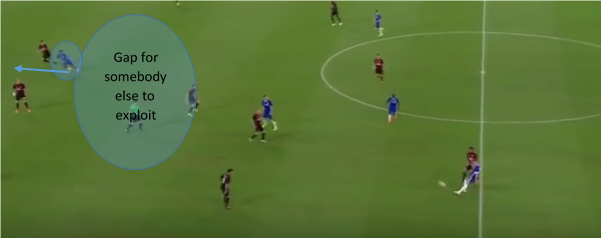
When coaching movements off the ball, it is also important to remember that sometimes standing still might be an effective way of finding space to receive and play forward. As the other players and the ball moves, the opposition players will change their positions. This mean’s that the space might appear as the striker stands still.
By Alex Trukan, Development Coach, Nottingham Forest
@AlexTrukan


